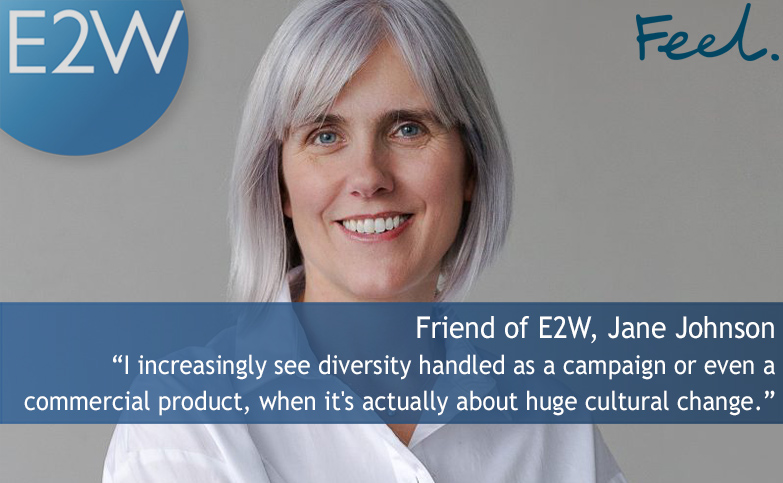
Jane Johnson “I increasingly see diversity handled as a campaign or even a commercial product, when it’s actually about huge cultural change.”
Katie.Dix / 09 Oct 2019
Are firms spending more on promoting themselves as being diverse and inclusive than they are on making the changes necessary to move the dial?
Many of our regular readers will have noticed the rising levels of frustration that having invested in and built a capability to be able to quickly put forward at least three quality female candidates for every senior role within Asset Management and Investment Banking that so many firms that say they are committed to closing their gender gaps are so reluctant to embrace our services and those of similar firms.
Jane Johnson runs Feel . Feel is a recruitment consultancy for PR & Corporate Communications. Their candidates all have at least 10 years’ experience, and therefore many of them are working parents. They start their search with “Who is the best person for this job?” not “Who can sit in an office 9-5, 5 days a week?”
Jane expressed her feelings in a recent blog that we have shared below:
“I wrote a pretty blunt post a few weeks ago about the pace of change being so slow in diverse & inclusive recruitment and the almost inversely proportionate amount of companies talking about being more diverse and hiring more inclusively.
Despite these couple of posts, I am not only about the negative. I work in this space so my clients are often struggling with what changes to make and how to make them. I always say there are individual pockets of ground-breaking greatness. Individual managers who just get it. They are happy to try something different, to hire and promote the best person for the job and if that means navigating uncharted waters with HR or the rest of the team in order to offer a role to someone who’s outstandingly talented but simply can’t be in the company office, 9-5, five days a week then so be it.
But I came across a report at the weekend, written by a consultancy specialising in big data and spotting global trends. These companies collect data, write reports which they sell or give to companies, in return for providing their consultancy.
Interestingly the consultancy has a practice dedicated to what they call Environmental, Social & Governance (ESG) and it is out of this practice that it has produced a “workplace diversity and inclusion report” citing that investors and portfolio managers are increasingly looking for companies that incorporate environmental, social and governance (ESG) values and principles into their business.
It was the report which drew me to the company in the first place. Highlights include:
- Although more companies are reporting on gender and cultural board diversity, women account for only 18% of board membership, and culturally diverse directors make up 29%.
- 61% of companies report female employee numbers while 43% report female manager numbers. Companies should continue to focus on these areas or progress may falter.
- Companies reporting that they have a Diversity and Opportunities Policy has increased from 39% in 2013 to 85% in 2017.
That last bullet point is the gem. Policy writing has gone through the roof, tangible action has not. I genuinely would like to know whether any large-scale cultural change has ever actually occurred because a policy was in place.
Given this company has a practice area focused on these issues I thought they sounded like an interesting organisation, so I headed over to their website. The About Us section showed a leadership team devoid of diversity. And the careers section listed literally hundreds of job vacancies, all over the world, in every single corporate sphere, but every single one of them listed as Full-Time.
Not to worry though, because at the bottom of every job description is a statement about relying on diversity of culture and thought, in order to deliver their goals, followed by a bit about them being proud to be an employer that holds no prejudice. Something that popped up a few years ago to attract more applicants from wider talent pools, has now become a perfunctory legal disclaimer.
I am not calling out this particular organisation because they are not unique. What I want to call out is this growing trend among employers – especially large global businesses – of talking about D&I, talking about wanting to see change, even making money or building brand value from the associated arguments but not actually doing anything about it beyond a nicely worded policy or few sentences at the end of each job description.
And of course I am not saying that D&I issues are all solved the moment you advertise a job as flexible, but one of the very measures that this report uses, is whether or not a company offers flexible working hours. It is such a simple and easy thing to do, and it does open up your talent pool to literally thousands of additional qualified applicants. Can I suggest that they, and others, give it a go?”
Back to blog



 Women in Financial Services
Women in Financial Services